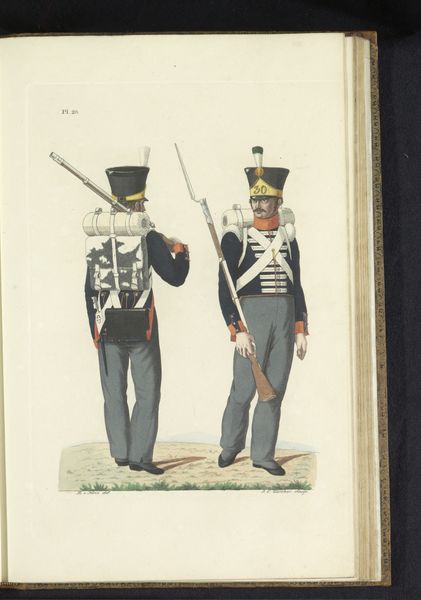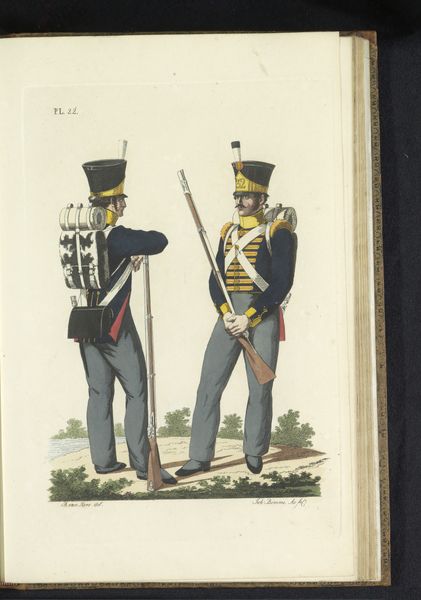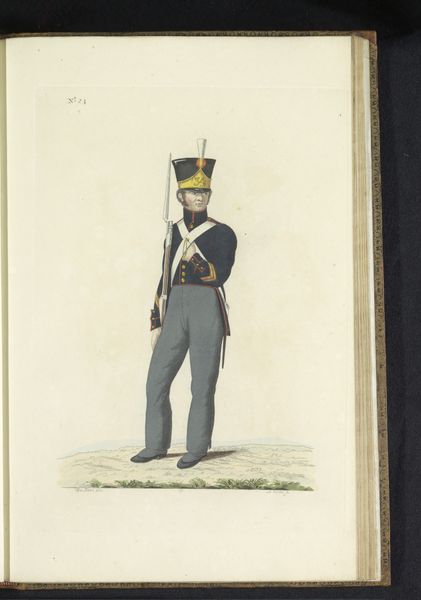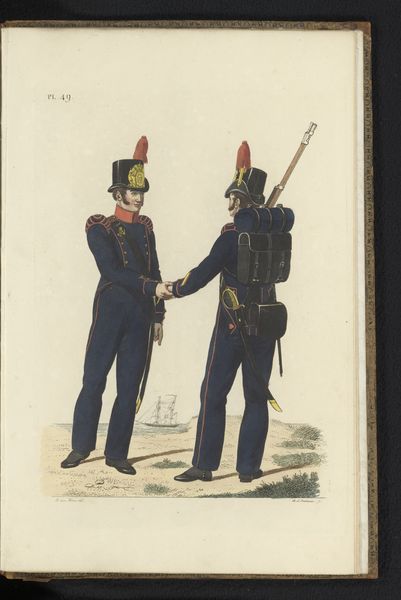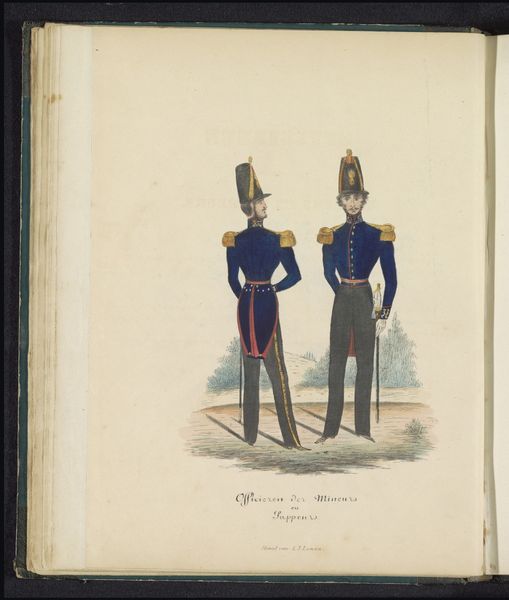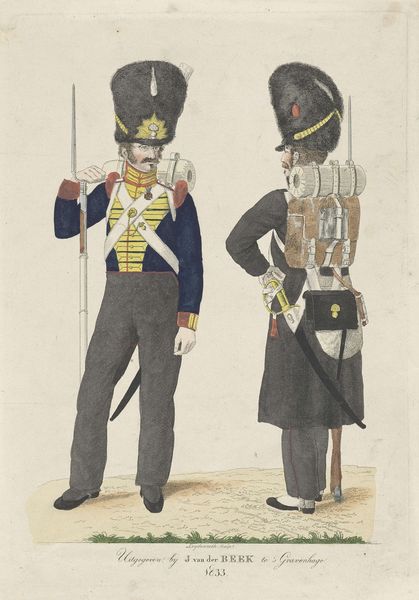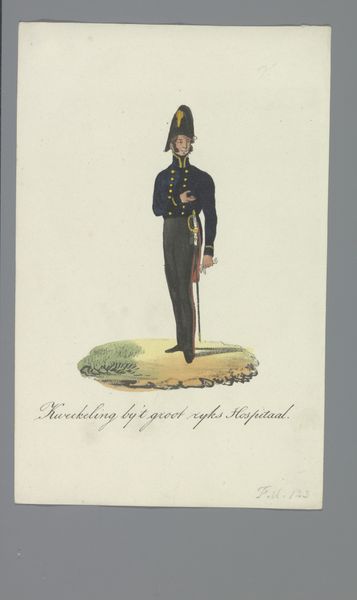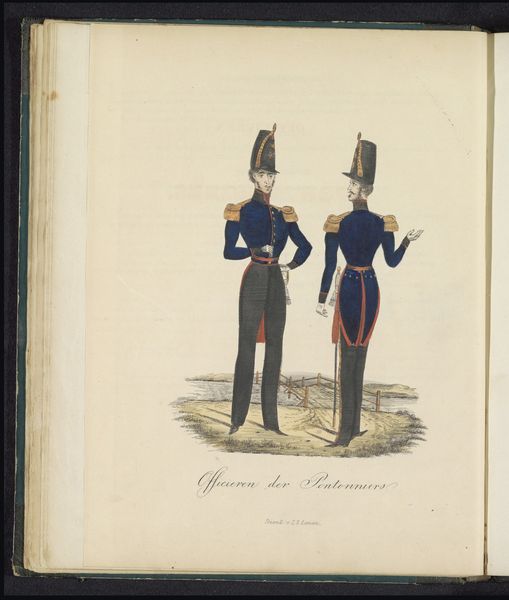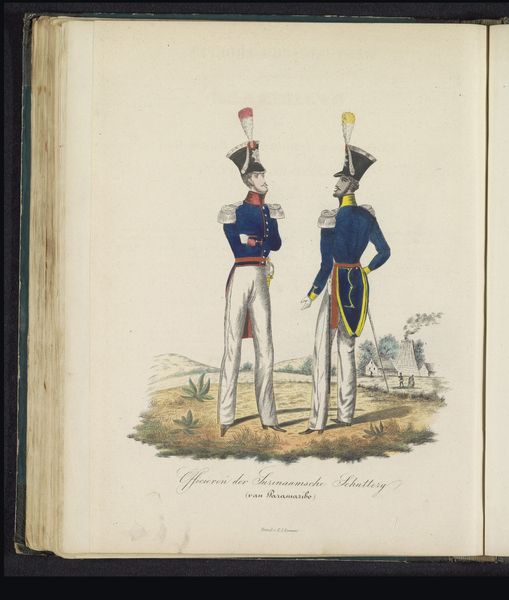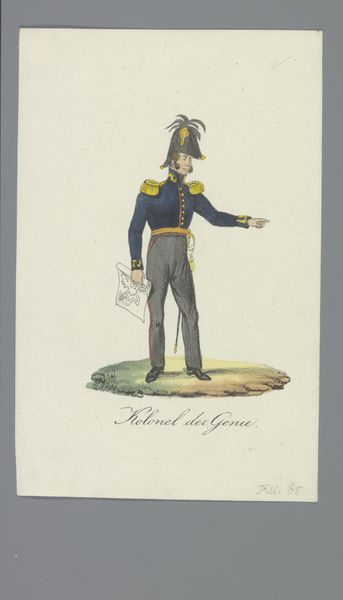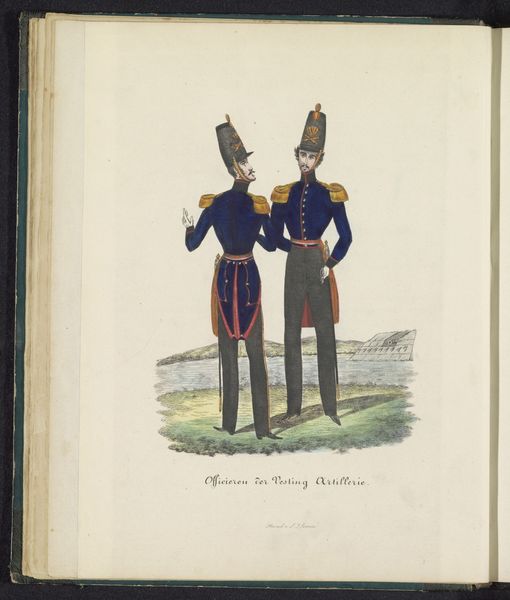
drawing, paper, watercolor
portrait
drawing
paper
watercolor
romanticism
watercolour illustration
genre-painting
watercolor
Dimensions: height 300 mm, width 205 mm
Copyright: Rijks Museum: Open Domain
Curator: This vibrant piece by Antoni Zürcher, crafted in 1823, depicts two soldiers, titled “Flankeur en Fuselier van het Regiment Zwitsers no. 29." Editor: My first impression is the meticulous detail in rendering their uniforms. It speaks volumes about societal pride vested in martial display, doesn't it? Curator: Precisely. Zürcher was a master of capturing not just likeness but also the precise details of rank and regalia. It is a watercolor drawing on paper, housed here at the Rijksmuseum. Editor: Looking at it now, beyond the artistry, I'm drawn to the actual labor involved in equipping a soldier then. The layers of uniform, the heft of the rifle... what kind of conditions shaped such elaborate gear? Curator: Good question! Consider the social context – these men are part of a Swiss regiment. Switzerland at this time was essentially renting out its soldiers as mercenaries. Their bodies and skills were commodities, quite literally manufactured for war. Editor: It’s fascinating how Romanticism embraced themes of nationalism while also reflecting the individual within these systems. Look at their faces – a touch of idealism, maybe, but also a sense of duty, a cog in this machine you describe. How are the watercolors laid down, any visible under drawing? Curator: Indeed. The composition reinforces this: one facing forward, engaged, the other turned away, perhaps contemplative, yet bound to the same fate. If you inspect closely, there is a sense of control, thin layers with little impasto; the drawing is well defined by linear markings. Editor: So, beyond national pride, is this watercolor maybe gesturing at some anxiety, too? These men become these anonymous, yet individually crafted, figures representing something so much bigger. Curator: Possibly. It offers a chance to reflect not only on a specific regiment but the role of individual labor and lives intertwined within broader political and economic machinations. A watercolor on paper offering a wealth of narratives. Editor: I think so. In seeing them presented with such directness we appreciate how complex even seemingly simple art may represent the larger material world.
Comments
No comments
Be the first to comment and join the conversation on the ultimate creative platform.
